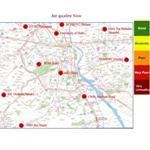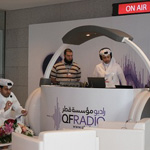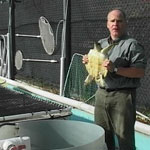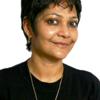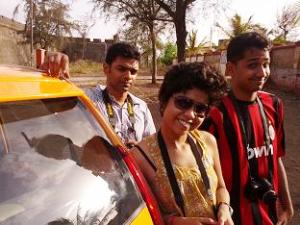Picture this. An elderly Khasi gentleman from Shillong, the capital of Meghalaya desires to make a trip to Delhi. His teenaged grandchild sends him an advisory – “Please cancel your trip this time, grandpa. The air quality of Delhi is not clean enough to support your health. Spring is a good time!”
Yes, this teenaged boy is making no jokes! Nor is he a fortune-teller. This is the reality! The Ministry of Earth Sciences (Government of India) provides forecast of air quality along with weather attributes of Delhi through Ministry’s truce programme named as “System of Air Quality Forecasting and Research” (SAFAR). Indian Institute of Tropical Meteorology (IITM), Pune a constituent under the Ministry is the torch bearer of this major initiative of the Government of India, which we all Indians must be proud of.
SAFAR has been successfully tested during the Commonwealth Games 2010 for National Capital Region of Delhi and ever since this programme has been providing location specific updates of real-time concentrations of major air pollutants like: Ozone, NOx, CO, PM2.5, PM10, benzene, toluene, xylene and BC at several localities together with a forecast, at least 24 hours in advance, of air quality and an advisory.
Advisories or alerts are issued to encourage people to avoid polluted areas thereby averting adverse health effects of air pollution. In response to the advisories people can make informed decision whether to - use public transportation or stagger work hours or even stay indoors. Industry and regulatory agencies may decide on temporary shutdown of polluting factories and thermal power plants.
The concentration values of the air pollutants may not make much sense to the common man. So, made-easy colour codes representing air quality being good (green), moderate (yellow), poor (saffron), very poor (Red) and unhealthy (brown) has been used by the SAFAR network.
The advance information on air quality along with weather information greatly benefits citizens to plan their outdoor activities and to prevent themselves from its adverse health effects. This effort of the ministry has been widely appreciated and World Meteorological Organization (WMO) of United Nations recognized it as an example in South Asia.
The second air quality and weather forecasting system developed for the twin cities of Pune and Pimpri-Chinchwad (SAFAR-Pune) has been inaugurated and dedicated for the service of the nation by Dr Shailesh Nayak, Honourable Secretary, Ministry of Earth Sciences (MoES), Chairman, Earth System Science Organisation (ESSO) and Chairman, Earth Commission on May 1, 2013 at an august gathering of scientists and academics of India and abroad, congregated for the International Workshop - Changing Chemistry in Changing Climate (C4) at IITM. SAFAR website on which the air quality index (AQI) and detailed weather information would be available and interactive voice response system (IVRS) were also inaugurated on the occasion by Dr Nayak. A booklet about SAFAR for common people has also been released on the occasion.
The Director of IITM, Pune, B. N. Goswami, dignitaries form WMO and key persons of various participating organisations of SAFAR – Pune were present at the function.
Speaking at the function Dr Nayak mentioned about the priority areas of atmospheric research on which MoES is committed. He also requested the scientific community to focus on ‘national need’ based research on air quality and the climate.
“The goal of SAFAR is to provide information on what is going to be the atmospheric levels pollutants in the next 24 hours. So, we need high resolution emission inventory to attain that. Pollution inventory is the apportioned local sources of pollution like emissions from vehicles, industry, residential areas along with road dust,” IITM Director B N Goswami said on the occasion.
While speaking at the function, Programme Director of SAFAR, Gufran Beig said, “the ultimate goal of SAFAR is to make general public aware regarding air quality well in advance so appropriate mitigation actions and systematic measures could be taken up.”
“In SAFAR, Pune, a new dimension has been added. In addition to air quality information it will also provide the information about the ultra violet radiation index,” Beig added.
SAFAR is a fine example of service of scientific research to common man which the scientific community must take as a precept.
All details all available at the SARAR website: http://safar.tropmet.res.in.
Find us on facebook: facebook.com/TheThumbPrintMag

